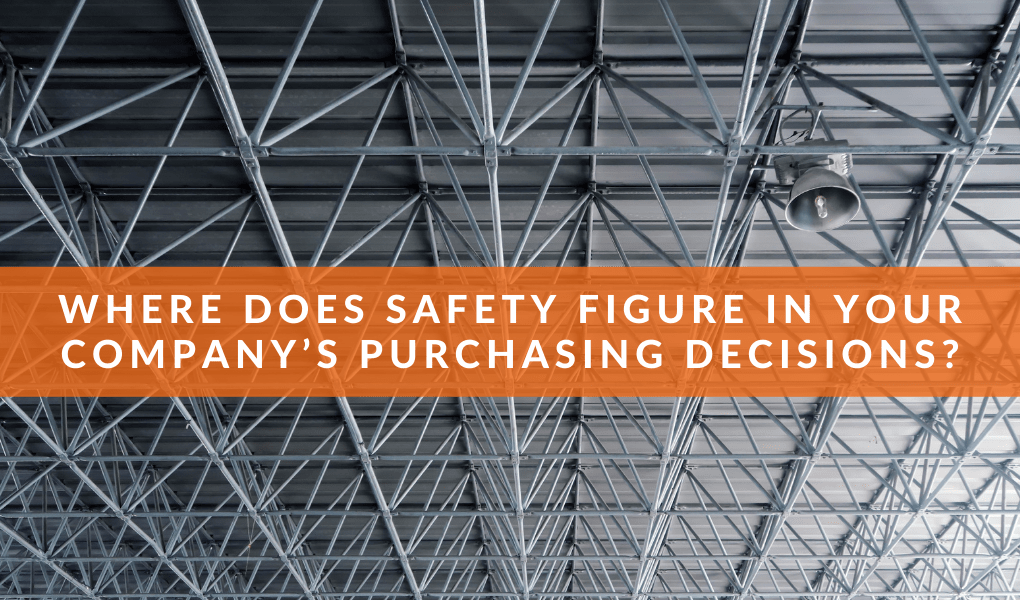
Where Does Safety Figure in Your Company’s Purchasing Decisions?
You’ve probably heard this sentence before: “Safety is our top priority.” But priorities are always on a list, and lists can change. Think about other company priorities you may have. For example, the following is essential:
- Efficiency
- Speed
- Revenue
- Profit
These are important. Without speed and efficiency, you won’t make revenue and profit. But where does safety figure in your company’s purchasing decisions?
Short answer: It should figure everywhere and on every level. As a safety manager, you’re there to make sure the staff puts safety first for the well-being of everyone, from team members to management.
This leads to another important question, one that’ll give you clarity regarding where safety falls in your decision-making: Is safety a priority or a value?
The Difference Between Value and Priority
First, let’s dive into the difference between value and priority. As stated above, lists can change. Not just that; priorities can shift and evolve. Sometimes they’re bumped down the list in favor of short-term benefits.
If safety is a value to you instead of a top priority, then it becomes a guiding principle for everything you do. As a value, it should be the main factor behind every purchasing decision.
Safety should be at the forefront of all decision-making. So, let’s explore how you can make safety a company-wide value, from top to bottom, thereby making it your driving factor behind purchasing decisions.
How to Make Safety a Company Value
Safety culture is the collection of individual and group attitudes, values, and behavioral patterns that determine a company’s overall safety management beliefs. It’s important to establish a solid safety culture that reflects how you value a safe workplace as a whole. This can include training employees regarding various safety measures.
Establish a Solid Safety Culture
It’s important that you lead by example, following all company safety protocols and wearing proper equipment. Otherwise, your workers won’t take it as seriously as they should.
A good way to make sure safety becomes number one for your employees is to personalize it for them. For example, ask them to imagine hearing their children’s laughter. Now think about how it would feel to never hear that laughter again because they didn’t wear protective hearing equipment. Personalization stays with them in a way that a PowerPoint presentation or a poster checklist simply won’t.
Your company should be investing money in creating a strong safety culture regardless, using company time to talk about safety and hosting safety classes.
To assist in this endeavor, here’s a video about maintaining healthy safety culture in the workplace:
Motivate Your Employees to Be Valuable Safety Players
Think of yourself as a sports coach. It’s vital that you motivate your team to care about their safety and the safety of others. Inspire your team to make safety a value, and represent that with your own individual values. Show your workers you genuinely care about their safety.
If they see compassion from you, they’ll be motivated to show that compassion for themselves and those around them.
Invest in Your Safety Meetings
Make these meetings count. Emphasize each employee’s value to your team. Instead of slapping up posters and reading them line-by-line, drum up a heartfelt, easy-to-understand presentation about safety topics, whether it’s about PPE or proper equipment use.
Keep these meetings consistent and make sure everyone participates. You can also find creative ways to keep your meetings engaging, maybe even humorous.
Reward Employees for Reporting Safety Hazards
Acknowledge your employees for reporting safety hazards and concerns. It’ll be much easier to maintain a safety culture if workers feel comfortable reporting their problems. While a pizza party, gift card or small monetary prizes may feel like it’s a “reward,” too often that could lead to employees not reporting safety hazards so their team can qualify for a “safe” work environment—even when it’s not. Make reporting safety hazards as much of a reward as no accidents.
Involve Your Team in the Process
Another reason to ask the team to report safety violations is that people tend to learn better when the process requires engagement. By involving them, you can get their feedback about current communication methods or what they feel the reporting process should entail. You may also learn about issues that you’ve overlooked or were unaware of.
Make it official, and organize a Joint Health and Safety Committee (JHSC). A JHSC consists of employee and management representatives, who provide oversight and focus on suggestions to create a safer workplace environment. This group not only puts your safety culture in action, but it also forges a stronger bond between management and workers.
While different departments will focus on long-term cost savings and short-term price savings for everything from inventory to maintenance, safety needs are one of those purchasing decisions that will matter for the long haul. The tips mentioned above help to keep it at the forefront of the workplace for the good of the entire team.

